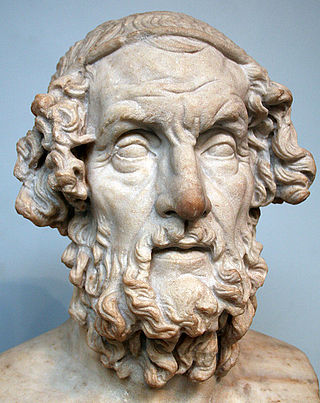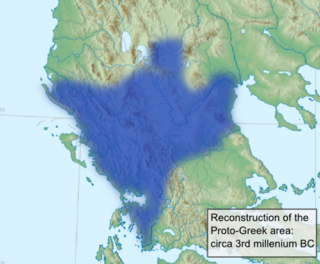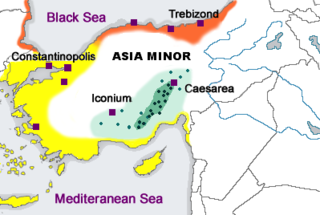Loading AI tools
Indo-European language From Wikipedia, the free encyclopedia
Greek (Modern Greek: Ελληνικά, romanized: Elliniká, pronounced [eliniˈka]; Ancient Greek: Ἑλληνική, romanized: Hellēnikḗ) is an Indo-European language, constituting an independent branch of Indo-European. It is native to Greece, Cyprus, Italy (in Calabria and Salento), southern Albania, and other regions of the Balkans, Caucasus, the Black Sea coast, Asia Minor, and the Eastern Mediterranean. It has the longest documented history of any Indo-European language, spanning at least 3,400 years of written records.[10] Its writing system is the Greek alphabet, which has been used for approximately 2,800 years;[11][12] previously, Greek was recorded in writing systems such as Linear B and the Cypriot syllabary.[13] The alphabet arose from the Phoenician script and was in turn the basis of the Latin, Cyrillic, Coptic, Gothic, and many other writing systems.
| Greek | |
|---|---|
| Ελληνικά Elliniká | |
| Pronunciation | [eliniˈka] |
| Native to |
|
| Ethnicity | Greeks |
Native speakers | 13.5 million (2012)[1] |
Indo-European
| |
Early form | |
| Dialects | |
| Greek alphabet | |
| Official status | |
Official language in | |
Recognised minority language in | |
| Language codes | |
| ISO 639-1 | el |
| ISO 639-2 | gre (B) ell (T) |
| ISO 639-3 | Variously:ell – Modern Greekgrc – Ancient Greekcpg – Cappadocian Greekgmy – Mycenaean Greekpnt – Pontictsd – Tsakonianyej – Yevanic |
| Glottolog | gree1276 |
| Linguasphere |
|
 Areas where Modern Greek is spoken (Dark blue represents areas where it is the official language.)[note 1] | |
The Greek language holds a very important place in the history of the Western world. Beginning with the epics of Homer, ancient Greek literature includes many works of lasting importance in the European canon. Greek is also the language in which many of the foundational texts in science and philosophy were originally composed. The New Testament of the Christian Bible was also originally written in Greek.[14][15] Together with the Latin texts and traditions of the Roman world, the Greek texts and Greek societies of antiquity constitute the objects of study of the discipline of Classics.
During antiquity, Greek was by far the most widely spoken lingua franca in the Mediterranean world.[16] It eventually became the official language of the Byzantine Empire and developed into Medieval Greek.[17] In its modern form, Greek is the official language of Greece and Cyprus and one of the 24 official languages of the European Union. It is spoken by at least 13.5 million people today in Greece, Cyprus, Italy, Albania, Turkey, and the many other countries of the Greek diaspora.
Greek roots have been widely used for centuries and continue to be widely used to coin new words in other languages; Greek and Latin are the predominant sources of international scientific vocabulary.

Greek has been spoken in the Balkan peninsula since around the 3rd millennium BC,[18] or possibly earlier.[19] The earliest written evidence is a Linear B clay tablet found in Messenia that dates to between 1450 and 1350 BC,[20] making Greek the world's oldest recorded living language.[21] Among the Indo-European languages, its date of earliest written attestation is matched only by the now-extinct Anatolian languages.

The Greek language is conventionally divided into the following periods:

In the modern era, the Greek language entered a state of diglossia: the coexistence of vernacular and archaizing written forms of the language. What came to be known as the Greek language question was a polarization between two competing varieties of Modern Greek: Dimotiki, the vernacular form of Modern Greek proper, and Katharevousa, meaning 'purified', a compromise between Dimotiki and Ancient Greek developed in the early 19th century that was used for literary and official purposes in the newly formed Greek state. In 1976, Dimotiki was declared the official language of Greece, after having incorporated features of Katharevousa and thus giving birth to Standard Modern Greek, used today for all official purposes and in education.[26]

The historical unity and continuing identity between the various stages of the Greek language are often emphasized. Although Greek has undergone morphological and phonological changes comparable to those seen in other languages, never since classical antiquity has its cultural, literary, and orthographic tradition been interrupted to the extent that one can speak of a new language emerging. Greek speakers today still tend to regard literary works of ancient Greek as part of their own rather than a foreign language.[27] It is also often[citation needed] stated that the historical changes have been relatively slight compared with some other languages. According to one estimation, "Homeric Greek is probably closer to Demotic than 12-century Middle English is to modern spoken English".[28]

Greek is spoken today by at least 13 million people, principally in Greece and Cyprus along with a sizable Greek-speaking minority in Albania near the Greek-Albanian border.[25] A significant percentage of Albania's population has knowledge of the Greek language due in part to the Albanian wave of immigration to Greece in the 1980s and '90s and the Greek community in the country. Prior to the Greco-Turkish War and the resulting population exchange in 1923 a very large population of Greek-speakers also existed in Turkey, though very few remain today.[10] A small Greek-speaking community is also found in Bulgaria near the Greek-Bulgarian border. Greek is also spoken worldwide by the sizable Greek diaspora which has notable communities in the United States, Australia, Canada, South Africa, Chile, Brazil, Argentina, Russia, Ukraine, the United Kingdom, and throughout the European Union, especially in Germany.
Historically, significant Greek-speaking communities and regions were found throughout the Eastern Mediterranean, in what are today Southern Italy, Turkey, Cyprus, Syria, Lebanon, Israel, Palestine, Egypt, and Libya; in the area of the Black Sea, in what are today Turkey, Bulgaria, Romania, Ukraine, Russia, Georgia, Armenia, and Azerbaijan; and, to a lesser extent, in the Western Mediterranean in and around colonies such as Massalia, Monoikos, and Mainake. It was also used as the official language of government and religion in the Christian Nubian kingdoms, for most of their history.[29]
Greek, in its modern form, is the official language of Greece, where it is spoken by almost the entire population.[30] It is also the official language of Cyprus (nominally alongside Turkish) and the British Overseas Territory of Akrotiri and Dhekelia (alongside English).[31] Because of the membership of Greece and Cyprus in the European Union, Greek is one of the organization's 24 official languages.[32] Greek is recognized as a minority language in Albania, and used co-officially in some of its municipalities, in the districts of Gjirokastër and Sarandë.[33] It is also an official minority language in the regions of Apulia and Calabria in Italy. In the framework of the European Charter for Regional or Minority Languages, Greek is protected and promoted officially as a regional and minority language in Armenia, Hungary, Romania, and Ukraine.[34] It is recognized as a minority language and protected in Turkey by the 1923 Treaty of Lausanne.[4][5][6][7]
The phonology, morphology, syntax, and vocabulary of the language show both conservative and innovative tendencies across the entire attestation of the language from the ancient to the modern period. The division into conventional periods is, as with all such periodizations, relatively arbitrary, especially because, in all periods, Ancient Greek has enjoyed high prestige, and the literate borrowed heavily from it.
Across its history, the syllabic structure of Greek has varied little: Greek shows a mixed syllable structure, permitting complex syllabic onsets but very restricted codas. It has only oral vowels and a fairly stable set of consonantal contrasts. The main phonological changes occurred during the Hellenistic and Roman period (see Koine Greek phonology for details):
In all its stages, the morphology of Greek shows an extensive set of productive derivational affixes, a limited but productive system of compounding[35] and a rich inflectional system. Although its morphological categories have been fairly stable over time, morphological changes are present throughout, particularly in the nominal and verbal systems. The major change in the nominal morphology since the classical stage was the disuse of the dative case (its functions being largely taken over by the genitive). The verbal system has lost the infinitive, the synthetically-formed future, and perfect tenses and the optative mood. Many have been replaced by periphrastic (analytical) forms.
Pronouns show distinctions in person (1st, 2nd, and 3rd), number (singular, dual, and plural in the ancient language; singular and plural alone in later stages), and gender (masculine, feminine, and neuter), and decline for case (from six cases in the earliest forms attested to four in the modern language).[note 3] Nouns, articles, and adjectives show all the distinctions except for a person. Both attributive and predicative adjectives agree with the noun.
The inflectional categories of the Greek verb have likewise remained largely the same over the course of the language's history but with significant changes in the number of distinctions within each category and their morphological expression. Greek verbs have synthetic inflectional forms for:
| Ancient Greek | Modern Greek | |
|---|---|---|
| Person | first, second and third | also second person formal |
| Number | singular, dual and plural | singular and plural |
| tense | present, past and future | past and non-past (future is expressed by a periphrastic construction) |
| aspect | imperfective, perfective (traditionally called aorist) and perfect (sometimes also called perfective; see note about terminology) | imperfective and perfective/aorist (perfect is expressed by a periphrastic construction) |
| mood | indicative, subjunctive, imperative and optative | indicative, subjunctive,[note 4] and imperative (other modal functions are expressed by periphrastic constructions) |
| Voice | active, medio-passive, and passive | active and medio-passive |
Many aspects of the syntax of Greek have remained constant: verbs agree with their subject only, the use of the surviving cases is largely intact (nominative for subjects and predicates, accusative for objects of most verbs and many prepositions, genitive for possessors), articles precede nouns, adpositions are largely prepositional, relative clauses follow the noun they modify and relative pronouns are clause-initial. However, the morphological changes also have their counterparts in the syntax, and there are also significant differences between the syntax of the ancient and that of the modern form of the language. Ancient Greek made great use of participial constructions and of constructions involving the infinitive, and the modern variety lacks the infinitive entirely (employing a raft of new periphrastic constructions instead) and uses participles more restrictively. The loss of the dative led to a rise of prepositional indirect objects (and the use of the genitive to directly mark these as well). Ancient Greek tended to be verb-final, but neutral word order in the modern language is VSO or SVO.
Modern Greek inherits most of its vocabulary from Ancient Greek, which in turn is an Indo-European language, but also includes a number of borrowings from the languages of the populations that inhabited Greece before the arrival of Proto-Greeks,[36] some documented in Mycenaean texts; they include a large number of Greek toponyms. The form and meaning of many words have changed. Loanwords (words of foreign origin) have entered the language, mainly from Latin, Venetian, and Turkish. During the older periods of Greek, loanwords into Greek acquired Greek inflections, thus leaving only a foreign root word. Modern borrowings (from the 20th century on), especially from French and English, are typically not inflected; other modern borrowings are derived from Albanian, South Slavic (Macedonian/Bulgarian) and Eastern Romance languages (Aromanian and Megleno-Romanian).
Greek words have been widely borrowed into other languages, including English. Example words include: mathematics, physics, astronomy, democracy, philosophy, athletics, theatre, rhetoric, baptism, evangelist, etc. Moreover, Greek words and word elements continue to be productive as a basis for coinages: anthropology, photography, telephony, isomer, biomechanics, cinematography, etc. Together with Latin words, they form the foundation of international scientific and technical vocabulary; for example, all words ending in -logy ('discourse'). There are many English words of Greek origin.[37][38]
Greek is an independent branch of the Indo-European language family. The ancient language most closely related to it may be ancient Macedonian, which, by most accounts, was a distinct dialect of Greek itself.[39][40][41][42] Aside from the Macedonian question, current consensus regards Phrygian as the closest relative of Greek, since they share a number of phonological, morphological and lexical isoglosses, with some being exclusive between them.[39][43][44] Scholars have proposed a Graeco-Phrygian subgroup out of which Greek and Phrygian originated.[39][45][46][47]
Among living languages, some Indo-Europeanists suggest that Greek may be most closely related to Armenian (see Graeco-Armenian) or the Indo-Iranian languages (see Graeco-Aryan), but little definitive evidence has been found.[48][49] In addition, Albanian has also been considered somewhat related to Greek and Armenian, and it has been proposed that they all form a higher-order subgroup along with other extinct languages of the ancient Balkans; this higher-order subgroup is usually termed Palaeo-Balkan, and Greek has a central position in it.[50][51]
Linear B, attested as early as the late 15th century BC, was the first script used to write Greek.[52] It is basically a syllabary, which was finally deciphered by Michael Ventris and John Chadwick in the 1950s (its precursor, Linear A, has not been deciphered and most likely encodes a non-Greek language).[52] The language of the Linear B texts, Mycenaean Greek, is the earliest known form of Greek.[52]

Another similar system used to write the Greek language was the Cypriot syllabary (also a descendant of Linear A via the intermediate Cypro-Minoan syllabary), which is closely related to Linear B but uses somewhat different syllabic conventions to represent phoneme sequences. The Cypriot syllabary is attested in Cyprus from the 11th century BC until its gradual abandonment in the late Classical period, in favor of the standard Greek alphabet.[53]

Greek has been written in the Greek alphabet since approximately the 9th century BC. It was created by modifying the Phoenician alphabet, with the innovation of adopting certain letters to represent the vowels. The variant of the alphabet in use today is essentially the late Ionic variant, introduced for writing classical Attic in 403 BC. In classical Greek, as in classical Latin, only upper-case letters existed. The lower-case Greek letters were developed much later by medieval scribes to permit a faster, more convenient cursive writing style with the use of ink and quill.
The Greek alphabet consists of 24 letters, each with an uppercase (majuscule) and lowercase (minuscule) form. The letter sigma has an additional lowercase form (ς) used in the final position of a word:
In addition to the letters, the Greek alphabet features a number of diacritical signs: three different accent marks (acute, grave, and circumflex), originally denoting different shapes of pitch accent on the stressed vowel; the so-called breathing marks (rough and smooth breathing), originally used to signal presence or absence of word-initial /h/; and the diaeresis, used to mark the full syllabic value of a vowel that would otherwise be read as part of a diphthong. These marks were introduced during the course of the Hellenistic period. Actual usage of the grave in handwriting saw a rapid decline in favor of uniform usage of the acute during the late 20th century, and it has only been retained in typography.
After the writing reform of 1982, most diacritics are no longer used. Since then, Greek has been written mostly in the simplified monotonic orthography (or monotonic system), which employs only the acute accent and the diaeresis. The traditional system, now called the polytonic orthography (or polytonic system), is still used internationally for the writing of Ancient Greek.
In Greek, the question mark is written as the English semicolon, while the functions of the colon and semicolon are performed by a raised point (•), known as the ano teleia (άνω τελεία). In Greek the comma also functions as a silent letter in a handful of Greek words, principally distinguishing ό,τι (ó,ti, 'whatever') from ότι (óti, 'that').[54]
Ancient Greek texts often used scriptio continua ('continuous writing'), which means that ancient authors and scribes would write word after word with no spaces or punctuation between words to differentiate or mark boundaries.[55] Boustrophedon, or bi-directional text, was also used in Ancient Greek.
Greek has occasionally been written in the Latin script, especially in areas under Venetian rule or by Greek Catholics. The term Frankolevantinika / Φραγκολεβαντίνικα applies when the Latin script is used to write Greek in the cultural ambit of Catholicism (because Frankos / Φράγκος is an older Greek term for West-European dating to when most of (Roman Catholic Christian) West Europe was under the control of the Frankish Empire). Frankochiotika / Φραγκοχιώτικα (meaning 'Catholic Chiot') alludes to the significant presence of Catholic missionaries based on the island of Chios. Additionally, the term Greeklish is often used when the Greek language is written in a Latin script in online communications.[56]
The Latin script is nowadays used by the Greek-speaking communities of Southern Italy.
The Yevanic dialect was written by Romaniote and Constantinopolitan Karaite Jews using the Hebrew Alphabet.[57]
Some Greek Muslims from Crete wrote their Cretan Greek in the Arabic alphabet. The same happened among Epirote Muslims in Ioannina. This usage is sometimes called aljamiado, as when Romance languages are written in the Arabic alphabet.[58]
Article 1 of the Universal Declaration of Human Rights in Greek:
Transcription of the example text into Latin alphabet:
Article 1 of the Universal Declaration of Human Rights in English:
Seamless Wikipedia browsing. On steroids.
Every time you click a link to Wikipedia, Wiktionary or Wikiquote in your browser's search results, it will show the modern Wikiwand interface.
Wikiwand extension is a five stars, simple, with minimum permission required to keep your browsing private, safe and transparent.